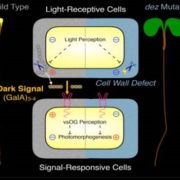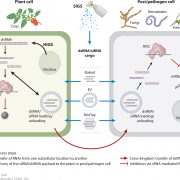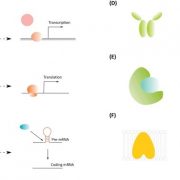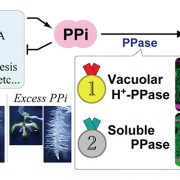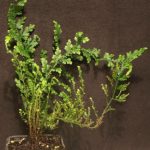Cannabis glandular trichomes alter morphology and metabolite content during flower maturation ($) (Plant J)
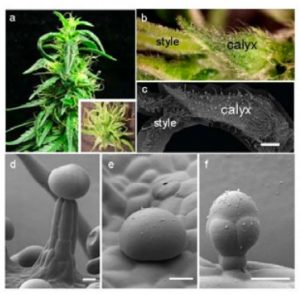 The therapeutic and recreational applications of Cannabis sativa (Cs) attract public and clinical interest thanks to its secondary metabolites (cannabinoids and terpenes) synthesized and stored in glandular trichomes, hair-like epidermal protrusion densely concentrated in the flowers. Little is known about the properties and contributions of the three different types of glandular trichomes present on the female flower: bulbous, sessile and stalked. The stalked produces more total cannabinoids than sessile, due to the differences in trichome head diameter. Livingston et al. described the internal anatomy, biochemistry and transcriptome profile of the glandular trichomes. They define the metabolite storage cavity of stalked and sessile trichome:
The therapeutic and recreational applications of Cannabis sativa (Cs) attract public and clinical interest thanks to its secondary metabolites (cannabinoids and terpenes) synthesized and stored in glandular trichomes, hair-like epidermal protrusion densely concentrated in the flowers. Little is known about the properties and contributions of the three different types of glandular trichomes present on the female flower: bulbous, sessile and stalked. The stalked produces more total cannabinoids than sessile, due to the differences in trichome head diameter. Livingston et al. described the internal anatomy, biochemistry and transcriptome profile of the glandular trichomes. They define the metabolite storage cavity of stalked and sessile trichome:
- Stalked: blue autofluorescence correlate with high cannabinoid levels; 12-16 secretory cells and strongly monoterpene-dominant terpene profiles.
- Sessile: red-shifted autofluorescence; 8 secretory cells and less monoterpene-dominant terpene profile.
Intrinsic autofluorescence patterns and disc cell numbers promoted a developmental model where sessile trichomes may represent a premature stage of stalked trichome formation. Moreover, the metabolic specialization of stalked trichomes for monoterpene production is highlighted by the identification and characterization of two unknown and highly expressed monoterpene synthases: CsTPS37FN and CsTPS38N. (Summarized by Francesca Resentini) Plant Journal 10.1111/tpj.14516



